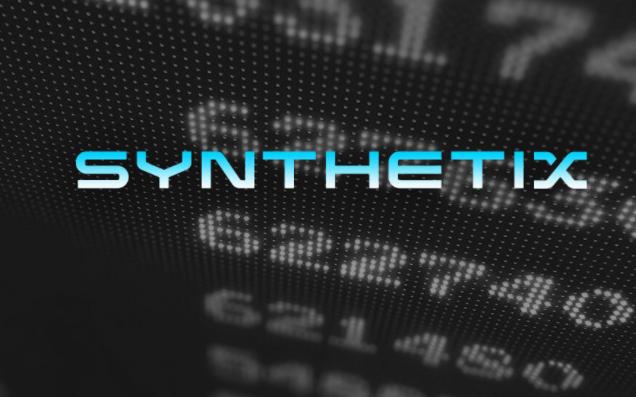Guide and Review of the Prediction Market Polymarket | DeFi Hunter
The blueprint of DeFi is grand and vibrant, with a continuous stream of dynamic DeFi projects emerging, harboring numerous investment opportunities that drive the evolution of the DeFi market. Next, Chain Catcher will release a series of analytical articles titled "DeFi Catcher" focusing on early DeFi projects, primarily those that have not issued tokens, to explore more possibilities for the future of DeFi.
The first article in this series focuses on the prediction market project Polymarket. Feel free to add the author's WeChat gnu0101 for communication and feedback.
1. Brief Introduction
Polymarket is a prediction market project built on the Ethereum Matic sidechain, where users can bet on popular global topics such as the U.S. elections, COVID-19, cryptocurrency prices, and more.
Compared to other prediction market projects, Polymarket has two main features. First, the project utilizes Ethereum's Layer 2 solution, Matic Network, allowing users' transactions to be completed quickly on the Matic sidechain without needing confirmation from the Ethereum mainnet, thus avoiding high fees and long wait times, typically completing transactions within 20-60 seconds.
Second, users can directly purchase USDC for betting on the project’s website using debit or credit cards, without needing to already own cryptocurrency or manage private key storage, significantly lowering the entry barrier for users.
At the same time, Polymarket employs an automated market maker mechanism, where all user transactions incur a 2% fee that goes to liquidity providers. According to Crypto Fees data, the project has averaged a daily fee deduction of $32,000 over the past week, ranking 9th among all blockchain projects, and it can be inferred that the average daily trading volume reaches $1.6 million.
2. Usage Process
The first step is for users to register on the website using their email, without needing to set a password. Each time they log in, a link will be sent to their email, and clicking it will be considered a successful login.
The second step requires users to transfer USDC to the platform, and only USDC can be used. There are three ways to transfer: one is to use the Metamask wallet, the second is to transfer directly to a specific address, and the third is to purchase USDC using a credit card.
In the third step, once users have USDC, they can browse various prediction events on the platform and choose which ones to participate in. For example, the event "Will ETH price exceed $1500 on January 27?" offers users two investment choices: YES or NO. The prices of both can be seen as the market's probability of the event occurring, with their sum fixed at $1. If users believe the market price deviates from the actual probability, for instance, if they think the probability of ETH exceeding $1500 on January 27 is higher than the 19% represented by the YES price, they can choose to buy the corresponding option and profit from it.
In the fourth step, after selecting a prediction event to bet on, users have two ways to exit their bets. The first way is to sell their held positions directly on the trading page, and the second way is to wait for the prediction event to conclude on the specified date and cash out. If the prediction is correct, they can earn considerable returns (each share held can earn $1); if incorrect, they will not receive any funds.
In the fifth step, after completing the bet exit, users can choose to withdraw. The platform allows users to withdraw USDC to any Ethereum address for free, but only between 12 PM and 6 PM daily, providing 2 ETH every 2 hours to cover gas fees for users. The project team will process withdrawal requests in the order they are submitted, usually taking several minutes to hours to complete.
3. Team and Investors
Polymarket was founded by early Ethereum supporter Shayne Coplan, who previously launched the staking service provider Token Union, helping users participate more conveniently in the staking ecosystems of projects like Ethereum, Tezos, Cosmos, Livepeer, and Irisnet.
In June 2020, Polymarket was established by Shayne Coplan and secured $4 million in funding in October, led by Polychain Capital, with other investors including well-known investment firms 1confirmation and ParaFi, former Coinbase CTO Balaji Srinivasan, Aave founder Stani Kulechov, Synthetix founder Kain Warwick, and Tagomi president Marc Bhargava, among other notable crypto investors.
4. Investment Opportunities
Polymarket has not yet issued tokens, and the project team states on the official website that the project is for informational and educational purposes only, does not hold any user assets, and does not generate any profits. However, considering the significant costs of project development, it is clearly unlikely to operate without any commercial returns, especially since the project has previously raised $5 million.
Therefore, issuing tokens may be the most likely way for Polymarket to achieve commercial returns. Currently, the project has also been included in the potential airdrop list by several crypto analysts.
Additionally, Polymarket presents certain arbitrage opportunities. On the morning of January 24, while checking information on the website, I received a push notification from the mobile app indicating significant fluctuations in the secondary market, with the ETH price rising from $1250 to nearly $1290 within ten minutes. At that moment, I recalled the prediction event regarding ETH prices on the site and discovered that its price had not changed significantly in the past few hours, fluctuating around $0.12. Due to the potential arbitrage opportunity, I purchased a total of $200 USDC in YES options in two transactions. Subsequently, the YES price began to rise, and after 40 minutes of relative stability in the ETH price, I chose to sell, thus earning a profit of $81.
This phenomenon indicates that due to limited user attention in the prediction market or the time zone differences between China and the West, the reflection of real-world changes in prediction events on prices may experience delays, creating good arbitrage opportunities.
5. Issues and Conclusion
During the usage process, I also found several areas for improvement in Polymarket.
First, the withdrawal speed for users is too slow. Due to the limited amount of ETH provided by Polymarket, with recent increases in ETH prices and gas fees, the 2 ETH are often quickly used up, leading to many users complaining about slow withdrawal speeds and frequent failures, often taking several hours to even tens of hours to complete. The official response states that they are developing corresponding solutions.
Second, there is low transparency. Currently, the project team has not disclosed any technical details about the project's operation. Additionally, there is no entry point for users to create prediction events on the official website; all prediction events seem to be created by the project team, who independently determine the results based on public information, only mentioning that disputed markets will be resolved by the Market Integrity Committee (MIC).
Moreover, Polymarket also has issues where some prediction events show inconsistent prices between the homepage and specific pages, abnormal profit and loss figures, and normal transactions frequently failing without reason.
Note: This article does not constitute any investment advice and is for learning and reference purposes only.











